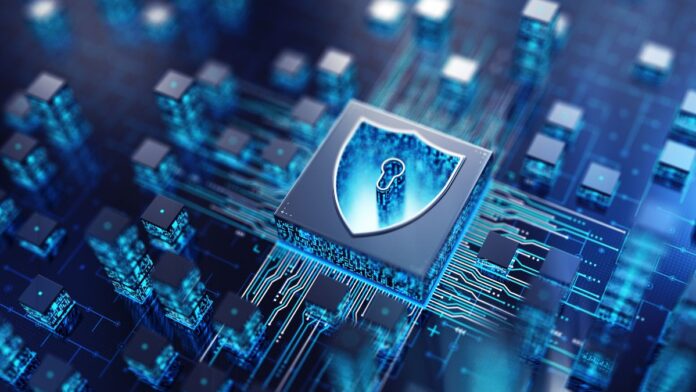You might think that cyber threats only target large organizations, but in reality, they can affect anyone, including you. Whether it’s phishing scams that steal your personal information or ransomware that can lock you out of your data, understanding these threats is important. In this blog post, I’ll outline the ten most common cybersecurity threats you may encounter and provide actionable steps to defend against them. By staying informed and taking proactive measures, you can significantly strengthen your cybersecurity posture and protect your valuable information.
Key Takeaways:
- Phishing attacks exploit human error, making training and awareness programs imperative for prevention.
- Ransomware can lock users out of their data; regular backups and updated security measures are vital for recovery.
- Unpatched software vulnerabilities are common entry points for cyber attacks; frequent updates and security patches are necessary for protection.
Phishing Attacks
Phishing attacks remain one of the most prevalent threats in cybersecurity. These malicious attempts trick individuals into providing sensitive information, such as passwords and credit card numbers, by masquerading as trustworthy entities. Cybercriminals often use emails, texts, or websites that closely mimic legitimate communications to deceive users, leading to significant financial and data losses.
Definition and Examples
Phishing can take various forms, including email phishing, spear phishing, and whaling. For example, in a classic email phishing attack, I might receive an email that appears to be from my bank, prompting me to click on a link to verify my account. Spear phishing targets specific individuals with personalized messages, making them even more convincing, while whaling focuses on high-profile targets like executives.
Prevention Strategies
To defend against phishing attacks, implementing multi-layered security measures is vital. Educating yourself and your team about recognizing phishing attempts significantly reduces vulnerability. Always scrutinize any communication requesting sensitive information, and never click on unexpected links or attachments. Utilizing email filtering tools can also help block known phishing attempts effectively.
Education is key; I find that regular training sessions can dramatically heighten awareness about phishing techniques. Most organizations benefit from simulated phishing exercises, which help employees practice identifying legitimate from fraudulent emails. Additionally, setting up two-factor authentication adds another layer of protection, as even if my credentials are compromised, accessing accounts becomes significantly harder for attackers.
Ransomware
Ransomware represents one of the most devastating threats in cybersecurity, where attackers encrypt your files and demand payment for the decryption key. Victims often find themselves unable to access critical data, resulting in significant financial losses and operational disruption. In 2021 alone, ransomware attacks increased by 150%, affecting organizations from small businesses to large corporations. The best defense combines proactive measures with an effective response plan.
How Ransomware Works
Ransomware typically operates by gaining access to your system through phishing emails or software vulnerabilities. Once inside, it encrypts files using strong encryption algorithms, rendering them inaccessible without a decryption key. Attackers then display a ransom note, often demanding payment in cryptocurrencies, such as Bitcoin, to avoid detection. This method capitalizes on urgency, as organizations face mounting pressure to restore critical data quickly.
Mitigation Techniques
To mitigate ransomware risks, maintaining regular data backups is crucial. Additionally, implementing multi-layered security measures such as firewalls, intrusion detection systems, and user training significantly reduces vulnerability. Patching software vulnerabilities can also help, as attackers often exploit outdated systems. Furthermore, developing an incident response plan ensures you can act swiftly in case of an attack.
I highly recommend conducting regular audits of your security posture, focusing on both technical and human factors. For instance, phishing awareness training for employees can lower the risk of initial access through social engineering. Regularly updating your software addresses known vulnerabilities, while structured backup processes not only protect data but also ensure quicker recovery, minimizing downtime. By combining these techniques, you can bolster your defenses against the looming threat of ransomware, securing your operations against costly disruptions.
Malware
The threat of malware is perennially at the forefront of cybersecurity concerns. This umbrella term encompasses a variety of malicious software designed to infiltrate and damage your system or data. Malware can lead to severe consequences, from data loss to financial theft. Knowing its forms and implementing protective strategies are your best defenses against these insidious attacks.
Types of Malware
Different types of malware can target systems in various ways, each with distinct harmful effects:
- Viruses – Self-replicating and often spread via infected files.
- Worms – Exploit vulnerabilities to spread across networks.
- Trojan horses – Disguised as legitimate software, typically trick users.
- Spyware – Secretly gathers user information without consent.
- Adware – Displays unwanted advertisements, often slowing down systems.
Any type of malware can severely disrupt your operations and compromise your data security.
Protection Measures
Implementing protection measures is important in safeguarding your system against malware. Regular software updates, comprehensive antivirus solutions, and cautious online behavior can dramatically reduce your risk.
To bolster your defenses further, consider adopting a multi-layered security approach. This includes using firewalls, conducting regular vulnerability assessments, and training employees on recognizing phishing attempts. Keeping your operating systems updated and backing up data frequently can also mitigate the impact of potential malware attacks. My experiences have shown that a proactive stance on cybersecurity significantly reduces vulnerabilities and enhances overall system resilience.
Insider Threats
Insider threats arise from individuals within an organization who misuse their access to sensitive data, intentionally or unintentionally compromising security. These insiders may include employees, contractors, or business partners, and their actions can lead to significant data breaches, financial losses, and damage to reputation. Understanding the motivations behind insider threats—such as disgruntlement, negligence, or coercion—is necessary in crafting effective defense mechanisms.
Identifying Insider Threats
Identifying insider threats often involves monitoring user behavior and access patterns. Anomalies such as excessive file downloads, unusual login times, or accessing sensitive data outside job responsibilities can indicate potential risks. I recommend implementing user activity monitoring tools, which flag these behaviors in real-time, allowing for immediate investigation and response.
Strategies for Reduction
To reduce insider threats, organizations should focus on comprehensive training, access management, and fostering a positive workplace culture. Regularly educating employees about cybersecurity best practices and the repercussions of data breaches can build awareness. Implementing the principle of least privilege ensures that individuals have only the necessary access to perform their duties, minimizing potential damage.
Moreover, I’ve found that creating a transparent and open work environment significantly lowers the risk of insider threats. When employees feel valued and heard, they are less likely to engage in harmful activities, whether out of malice or frustration. Combining this with a strong incident response plan can mitigate damage quickly if a breach occurs. Regular audits, clear reporting channels, and ongoing training empower you to manage insider risks effectively while ensuring a secure organization.
DDoS Attacks
Distributed Denial of Service (DDoS) attacks overwhelm a target’s resources, rendering it unusable by flooding it with excessive traffic. This malicious strategy exploits networks of compromised computers, known as botnets, to launch coordinated attacks, making it difficult to distinguish between legitimate and illegitimate traffic. Organizations across various sectors face disruptions, financial losses, and reputational damage due to these attacks, which can cripple services for hours or even days.
Understanding DDoS
To grasp the threat DDoS poses, consider that over 15 million DDoS attacks occurred in 2020 alone, with many targeting high-profile companies. Typically, attackers leverage networks of infected devices, creating a massive traffic wave that can incapacitate a website in a matter of minutes. The range of DDoS attacks varies from volumetric attacks, focusing on bandwidth saturation, to more sophisticated layer 7 attacks aimed at exhausting server resources.
Defense Mechanisms
Defending against DDoS attacks requires a multi-faceted approach. Utilizing traffic analysis tools, deploying web application firewalls, and leveraging content delivery networks (CDNs) can help mitigate the impact. Organizations should also adopt rate limiting and IP blacklisting strategies to filter malicious traffic before it reaches the server.
In addition to these techniques, I recommend implementing a DDoS protection service that can absorb and deflect attacks using advanced filtering technology. Regularly updating your strategy based on evolving attack patterns is necessary. It’s beneficial to conduct simulated DDoS attacks to assess your organization’s resilience. Investing in employee training on incident response can greatly enhance your overall defense posture against such threats.
Man-in-the-Middle Attacks
Man-in-the-middle (MitM) attacks involve an attacker intercepting and potentially altering the communication between two parties without their knowledge. This type of attack can occur on insecure networks, like public Wi-Fi, making users vulnerable to data breaches and identity theft. The attacker can capture sensitive information such as login credentials, credit card numbers, and personal messages, causing severe consequences for individuals and organizations alike.
Mechanism of Attack
In a typical MitM attack, the attacker places themselves between the victim and the intended recipient, often by exploiting weak network security. For example, they might use tools like packet sniffers or spoofed access points to intercept data flows. They can manipulate the communication to inject malware or redirect traffic, all while appearing as a legitimate participant in the interaction.
Counteracting Measures
To defend against MitM attacks, you should consistently use encryption protocols, such as SSL/TLS, to secure communications. Additionally, establishing a virtual private network (VPN) can create a safe tunnel for your online activities. Always verify the authenticity of web pages and connections, especially when using public Wi-Fi.
Implementing these counteracting measures can significantly reduce your risk of falling victim to MitM attacks. Encrypting your data ensures that even if intercepted, it remains unreadable. Using a VPN not only encrypts your traffic but also hides your IP address, making it harder for attackers to target you. Always be wary of connecting to unknown networks, and consider leveraging multi-factor authentication to add another layer of security. By following these practices, you create a stronger defense against potential interception attempts.
To wrap up
Summing up, understanding the 10 common cybersecurity threats and knowing how to defend against them empowers you to protect your digital assets effectively. I encourage you to assess your current security posture, implement appropriate measures, and stay informed about emerging threats. By prioritizing security awareness and adopting best practices, you can significantly reduce vulnerabilities and safeguard your information from potential attacks.
FAQ
Q: What are the top ten cybersecurity threats that organizations face?
A: The top ten cybersecurity threats include phishing, ransomware, malware, insider threats, denial-of-service (DoS) attacks, advanced persistent threats (APTs), credential stuffing, man-in-the-middle (MitM) attacks, IoT vulnerabilities, and software vulnerabilities.
Q: How can organizations effectively defend against phishing attacks?
A: Organizations can defend against phishing attacks by implementing email filtering systems, providing employee training on recognizing phishing attempts, using multi-factor authentication (MFA), and regularly updating software to patch vulnerabilities.
Q: What steps should be taken to safeguard against ransomware?
A: To safeguard against ransomware, organizations should conduct regular data backups, maintain up-to-date antivirus software, apply security patches promptly, use network segmentation to limit spread, and conduct employee awareness training on avoiding suspicious links and downloads.










